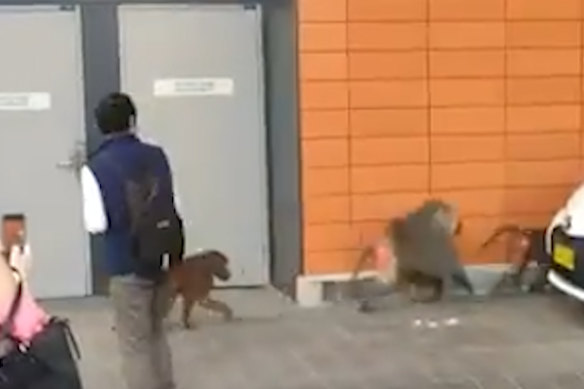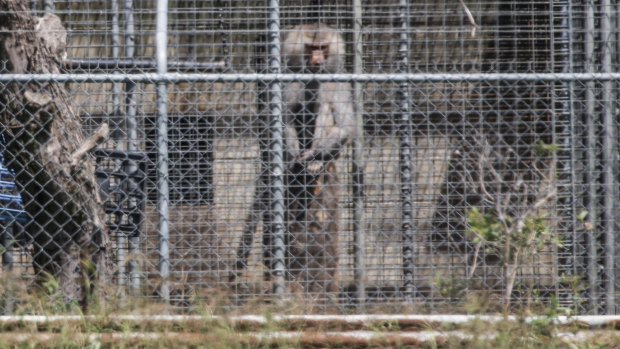This was published 4 years ago
Baboon escape sparks calls for transparency in animal medical research
By Rachel Clun
Animal welfare groups and an expert in laboratory animal welfare have called for more transparency over the use of animals in medical research after a trio of baboons escaped from their vehicle at the Royal Prince Alfred Hospital in Sydney's inner west on Tuesday afternoon.
The older male baboon and his two younger female companions escaped after a lock failed, and the three wandered through a car park before they were recaptured about 7.30pm.
The baboons were at the hospital so the male could have a vasectomy, but they come from a breeding colony at a facility in Wallacia, in Sydney's west. Animals from the colony are used in medical research around the country.
According to not-for-profit group Humane Research Australia, 272 primates were used for medical research in Australia in 2017.
In 2016, The Sydney Morning Herald revealed several hospitals around Sydney had used baboons from the Wallacia facilities for medical experiments, including organ transplants from a pig to a baboon.
Royal Prince Alfred Hospital was contacted for comment about what research the baboons were involved in at the hospital, and why, but the hospital did not respond by deadline.

Baboons outside Royal Prince Alfred Hospital in Sydney.Credit: Michael Tran via Twitter
Humane Research Australia, which challenges the use of animals in medical research, said that, as well as baboons bred in NSW, marmosets and macaques bred in Gippsland in Victoria are used in medical experiments.
Chief executive Helen Marston said the Wallacia facility was "extremely secretive". Despite assurances the animals were kept in world-class facilities, the organisation had learnt of unexpected deaths through freedom of information requests about the Victorian facility.
"We keep finding these incidents that clearly show it's not world class at all, not when you find primates died unexpectedly overnight from causes that they weren’t aware of; they’re clearly not being kept well," she said.
Malcolm France, a private consultant on laboratory animal care and management, said comments like that were "unfair to an awful lot of people", as all research facilities had to go through a rigorous process to use animals in studies.

A baboon sits and looks out from behind security fencing at the National Health and Medical Research Council facility in Wallacia in Sydney's west in a file picture.Credit: Dallas Kilponen
"Put simply, there are some questions that even with the most sophisticated alternatives can't be answered unless you use the whole animal," he said.
Dr France said those projects had to be approved by a panel that includes a veterinary surgeon, a member of an animal welfare group, a lay person and a scientist who can assess the validity of the research proposal. He said facilities also employed vets and dedicated animal welfare staff to look after the animals involved in the research.
Despite that, Dr France said all hospitals, universities and research facilities should be more transparent about the use of animals in their research.
"I think we need to get better at talking about it so people can make up their minds."
Animal Justice Party MP Emma Hurst said these three baboons had become the public faces of the millions of animals used in medical experiments.
"This is something we do need to have a public conversation about. It's a very hidden industry and no public scrutiny is allowed" she said.
"If there's nothing to hide, then show the world and actually let the community decide whether its ethical and justifiable."
As for the escapee baboons, NSW Health Minister Brad Hazzard tweeted all three were well and resting, and had been fed bananas, capsicum, apple and bread on Wednesday.
The male baboon is due to undergo his vasectomy on Thursday and all three will rejoin their troupe which includes four other females after the operation.